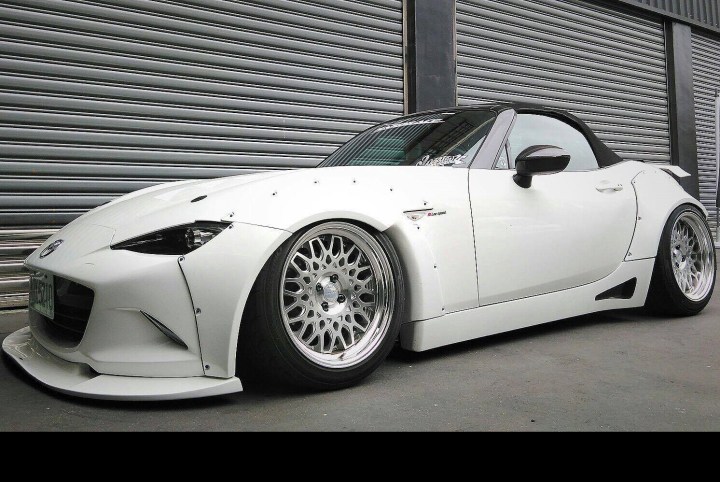
Speaking of, its mother might just be a DTM car. Aimgain’s build wears fender flares riveted onto the Miata’s stock body, a sizable splitter attached to the front bumper, and a big diffuser out back. It’s a few sponsor stickers and a roll cage away from looking like it just got done tearing up a track.
Examining this Miata’s DNA reveals genes shared with the cars that star in the Fast and Furious franchise. It rides on extra-wide alloy wheels wrapped by low-profile tires and tucked deep into the wheel wells. That’s because the Miata’s precision-tuned suspension has been thrown out and replaced with a full air suspension, which allows the driver to adjust the ride height as needed. It varies between a few sixteenths of an inch off the ground and about normal.
Fitting an air suspension requires installing a lot of additional hardware, including electronic components and tanks to store the air in. The extra parts are shoehorned in the Miata’s trunk, a packaging solution that greatly reduces the roadster’s cargo capacity. With any luck, the spoiler attached to the trunk lid doubles as a luggage rack.
The engine bay looks almost stock, so don’t know whether the build includes any major mechanical modifications. The standard Miata uses a naturally aspirated, 2.0-liter, four-cylinder engine that makes 155 horsepower at 6,000 rpm and 148 pound-feet of torque at 4,600 rpm. It spins the rear wheels via a six-speed manual transmission.
That 155 horsepower doesn’t sound like a lot, not in an era when you can buy a muscle car with 840 wild horses, but the Miata has never been about raw power. If you disagree with the status quo, there are numerous aftermarket companies that will either build you a faster Miata, or sell you the parts you need to build your own. Flyin’ Miata will even drop a 525-horsepower V8 in the engine bay. Add in the Aimgain kit, and your car will look as mean as it sounds.



